“Healthy competition is critical for what we do as fighter pilots because there’s no competition quite as testing as real combat,” says Brig. Gen. Micah “Zeus” Fesler, Air Combat Command’s Air Expeditionary Wing commander overseeing Exercise William Tell, which is being held from September 11-15, 2023, at the Air Dominance Center in Savannah, Georgia. “The reality of this is that when you compete and strive to be your best, strive for perfection, you’re working to be better than your peers and to beat the enemy — this is how we get better.”

Editor’s Note: Welcome to the second in our three-part series on the rebirth of the legendary William Tell fighter competition and training exercise. Be sure to read all about the colorful history of William Tell and how it has been adapted for the cutting-edge of air combat in our first installment here.
Unlike other U.S. military air combat exercises such as Red Flag, William Tell actually pits aircrews, maintainers, weapons loaders, intel officers, and command and control personnel against one another as they battle it out to win prestigious trophies. “To bring competition into the mix is a means to start improving and continuing to posture ourselves better for the great power competition,” says Fesler.

“The big difference is that scoreboard,” Fesler stated, as he at the big digital scoreboard that is broadcasting daily performance grades during the exercise. “When you go to a Red Flag, if you fail, if you get ‘shot down,’ you have the embarrassment in the debrief, you look at the flight recording tapes, and you look at what to do better next time. But what’s great about the competition at William Tell is that you see your name on that board and you see your performance every day. When you track how you are training, and how you are performing, it gives a different perspective. I think it brings out the best in people.”

In the first two days of this new incarnation of William Tell, resurrected after a 19-year absence, there has been a blend of competition between weapons loaders, aircrews, and intelligence officers, as well as a range of keynote speeches and panel sessions to help breed squadron culture and knowledge of the historical wins of the USAF.
“We are trying to make it not only awesome flying but also something not seen in other exercises, the accompanying air power events,” explains exercise director Maj. Garrett “Dodge” Getschow. “On the first day of the exercise, Lt. Col. (Ret) James Harvey, who was in the first winning “Top Gun” team in 1949, was here to tell the entire William Tell team the story of how they won the first air-to-air gunnery meet, and the history of how it was classified as top secret for years, so it wasn’t revealed. Keynote speakers are also sharing their stories to help inspire people to stay in, or to come and join, the military.”
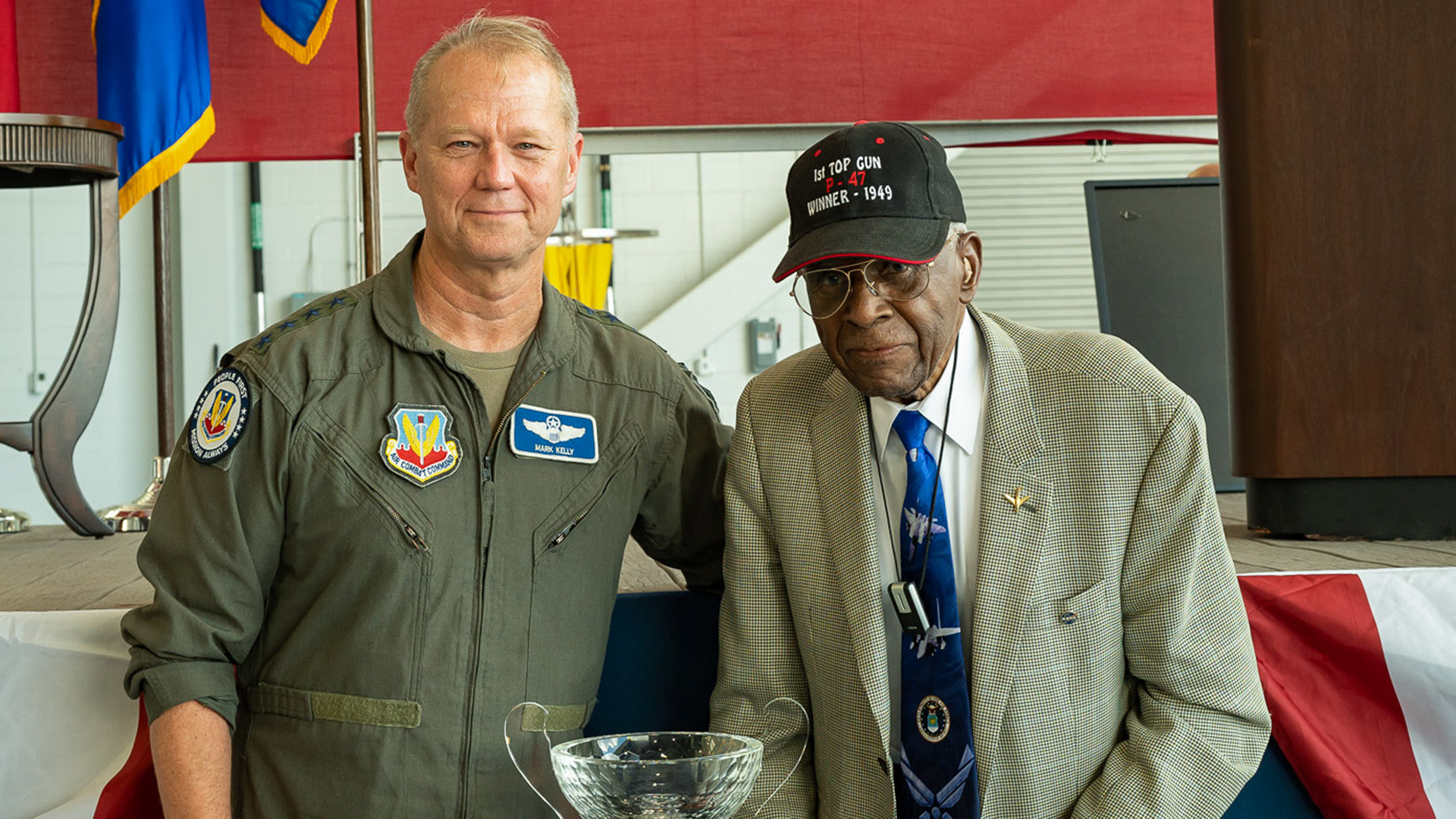
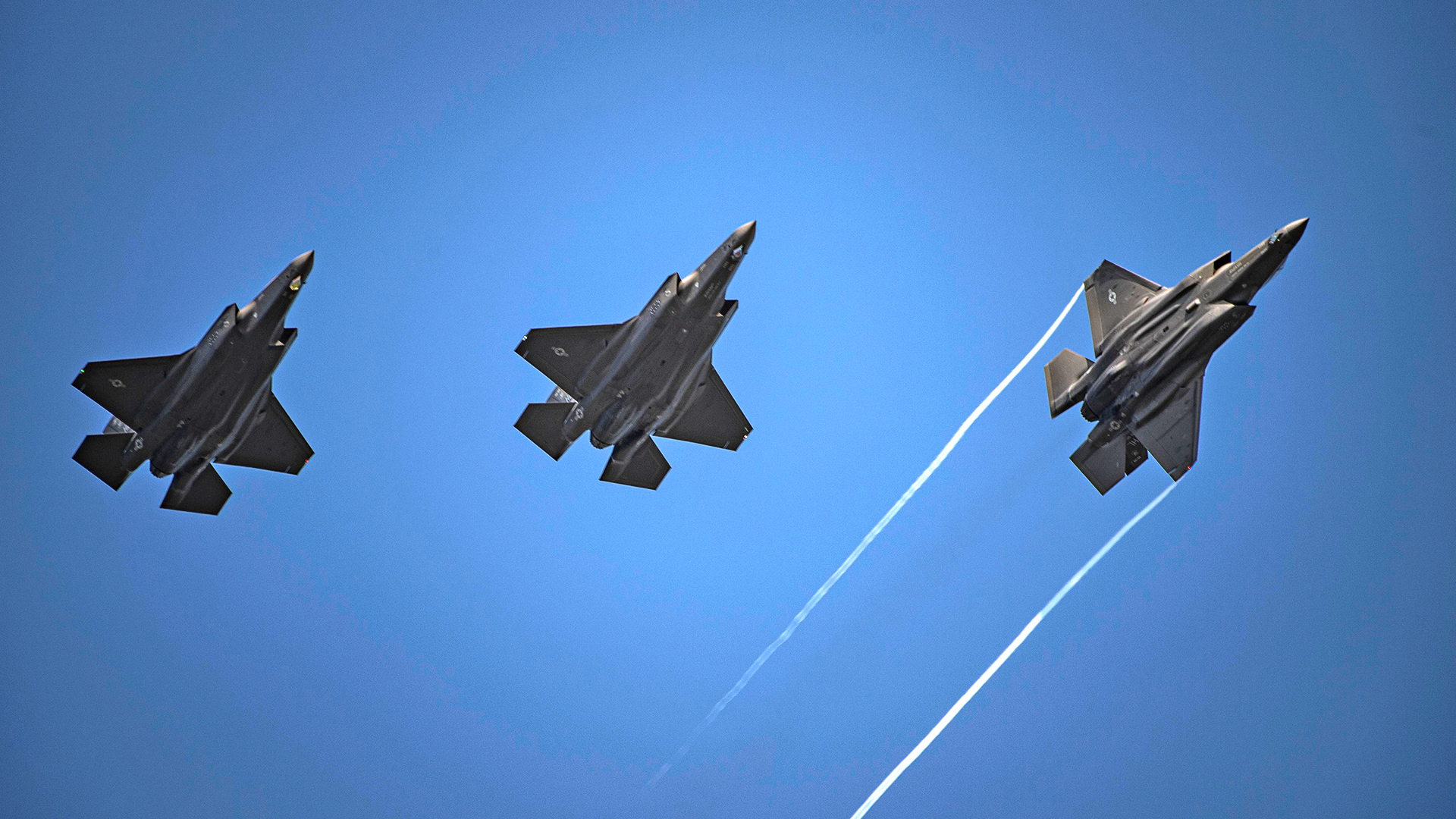
Reflecting on the actual flying elements of the exercise over the first two days, Getschow is glowing in his appraisal of the carefully planned events. “It was an awesome experience on day one as the 1st, 388th, and 104th Fighter Wings came together for the first Defensive Counter Air [DCA] Fighter Integration [FI] mission, which consisted of a 4+4+4 of F-22s, F-35As, and F-15Cs respectively, against all the assembled ‘Red Air’ assets.” These include F-16Cs from the 64th Aggressor Squadron, T-38s from the 7th Fighter Training Squadron, and a mix of the participating F-15s, F-22s, and F-35s, flown by the “White Force” evaluator team.
“In terms of making these FI VULs [vulnerability periods, aka missions] unique, at William Tell each wing team gets one chance to go up and show what they’ve got. They are charged with integrating with two other wings, and it’s been clear that some guys have been pretty upset; they might have missed their shot at it.”

“The afternoon was all ACM [Air Combat Maneuvering] fights, and that was based around a “CAP and tap.” CAP is the acronym for Combat Air Patrol and tap means the ‘blue air’ friendly fighters are attacked by the ‘red’ force. “Feedback from the Alaskan Raptors, which did that first ACM ‘CAP and tap,’ was that they found it the most fun fighting experience they’ve had.” The ‘CAP and tap’ at William Tell involved two fighters from each team against two separate bandits. “You deal with one aggressor then they turn around and another is ready to kill you,” explains Getschow.
“When it comes to ACM, we don’t train much for this kind of fight. We certainly don’t do it back and forth, back and forth, like we have here. In William Tell’s ACM they are in a constant 2-v-1, they’re supporting their ‘bro’ to keep them alive at close range. Unique to this is that one pair of F-22s, for example, went against a T-38 and an F-35. The other pair went up against an [aggressor] F-16 and an F-15, so it was always dissimilar and they didn’t know who they were up against until they got there.”
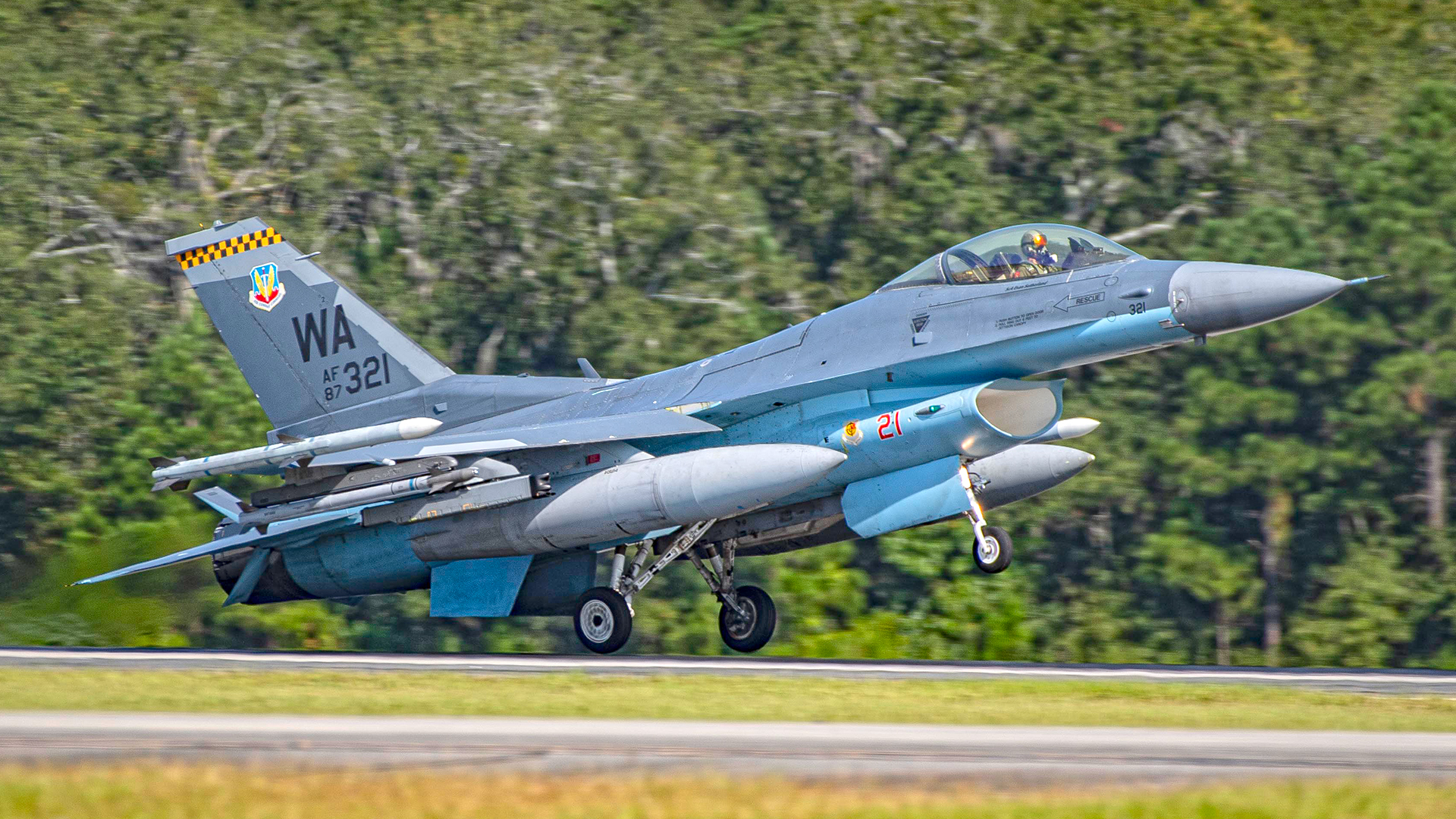

Some of the planned schedule for the week had to be reshuffled due to Hurricane Lee off the Eastern seaboard. It meant the planning team moved up the FI missions as they required the most airspace, which the hurricane could impact later in the week.
Every day had two banner shoots scheduled. “Each competing wing has its own banners, and we are actually bringing them back and counting the holes, with the winner being those with the most holes per round expended,” Getschow explained. The 1-v-1 Basic Fighter Maneuvers (BFM) – dogfighting — was slipped to Thursday as it requires less airspace and less chance of having the hurricane impede the available airspace.

“There was a definite winner on day one as three Raptors were lined up together for the initial weapons loading competition. The entire William Tell team watched as the 1st FW won that first round. The team loaded in 27 minutes, with zero discrepancies – taking them into the final on Thursday,” Getschow said.
“I am looking at all the platforms we have here [F-15, F-22, and F-35],” says Chief Master Sergeant Yamil Davila, the head weapons evaluator for this William Tell. “We evaluate safe, secure, and reliable loading operations. This is demonstrating the ability to rapidly generate aircraft for that rapid combat capability. We look for team dynamics, communication, and precision loading operations — speed and accuracy.”
The three-person team includes a chief, who ensures it’s all being done by the book. The “two-man” preps the aircraft for the load, with the third member inspecting the load and driving the weapons to the aircraft. “Some platforms are slightly more complicated,” explains Davila.

“For instance with the F-22 and its internal bay, there’s not a lot of clearance. That loading has to be very precise to ensure it doesn’t damage the munition or the aircraft. The F-35 is very similar. The F-15 is a bit different because all the weapons are external, which means there’s more room to work and lower risk of damage.”
The weapons loading competition heats within each type saw two AIM-120 Advanced Medium-Range Air-to-Air Missiles (AMRAAMs) and two AIM-9X Sidewinders being loaded by each team. The F-22s and F-35s carry the AIM-120s in the under-fuselage internal bays, while the Eagle carries them on the external shoulder stations. The Raptor carries the AIM-9s in internal side bays, although the rails extend out of the recess for ease of loading and for firing clear of the fuselage. The F-35 carries AIM-9Xs on external wingtip pylons, while the F-15s carry them on the wing shoulder pylons.
The grand final weapons loading on Thursday sees each team receive four AMRAAMs and two Sidewinders in their transportation containers, and so they face an added complication of having to pull them from the “casket” and place each missile on a cradle to then load. The three teams and their respective aircraft will line up and go head-to-head at the same time.

Facilitating the whole exercise is the Combat Readiness Training Center (CRTC) at Savannah, under the command of Lt. Col. Stephen “Tracker” Thomas. He explains that the airspace available here is unique and highly sought after. “Our airspace [over the Atlantic Ocean] is 230 nautical miles from north to south and 250 nautical miles from east to west, and goes from the surface up to 60,000 feet, with only limited supersonic restrictions.”
“We have 23 acres of ramp space here at the Air Dominance Center that can accommodate 54 fighters, and for secure briefing and debriefing, we have 7,000 square feet of vault space, which is critical when you’re bringing in nine units that require classified space for the competition. In our ‘war room,’ we can track the aircraft from power on to shut down.” This allows the William Tell evaluators to understand exactly what unfolded during each mission, with accurate three-dimensional modeling of the action. The aircraft are tracked on radar, but also via air combat maneuvering instrumentation pods that include data link capabilities fitted to the fighters.

“We’ve set up some really challenging scenarios for the teams,” Brig. Gen. Fesler notes. “The Savannah CRTC set all of this up beautifully for us, and they do a great job at the ADC hosting the event and providing us with exactly what we need.”
“I think the live missiles part of the historic William Tell was great – it’s always important to ensure our systems are working end-to-end, and the reality is that we have our Weapons System Evaluation Program Combat Archer that exercises that live missile firing. When it comes to William Tell, we can still exercise our end-to-end capabilities, but at a bit lower cost without employing live missiles. We still get great training.”
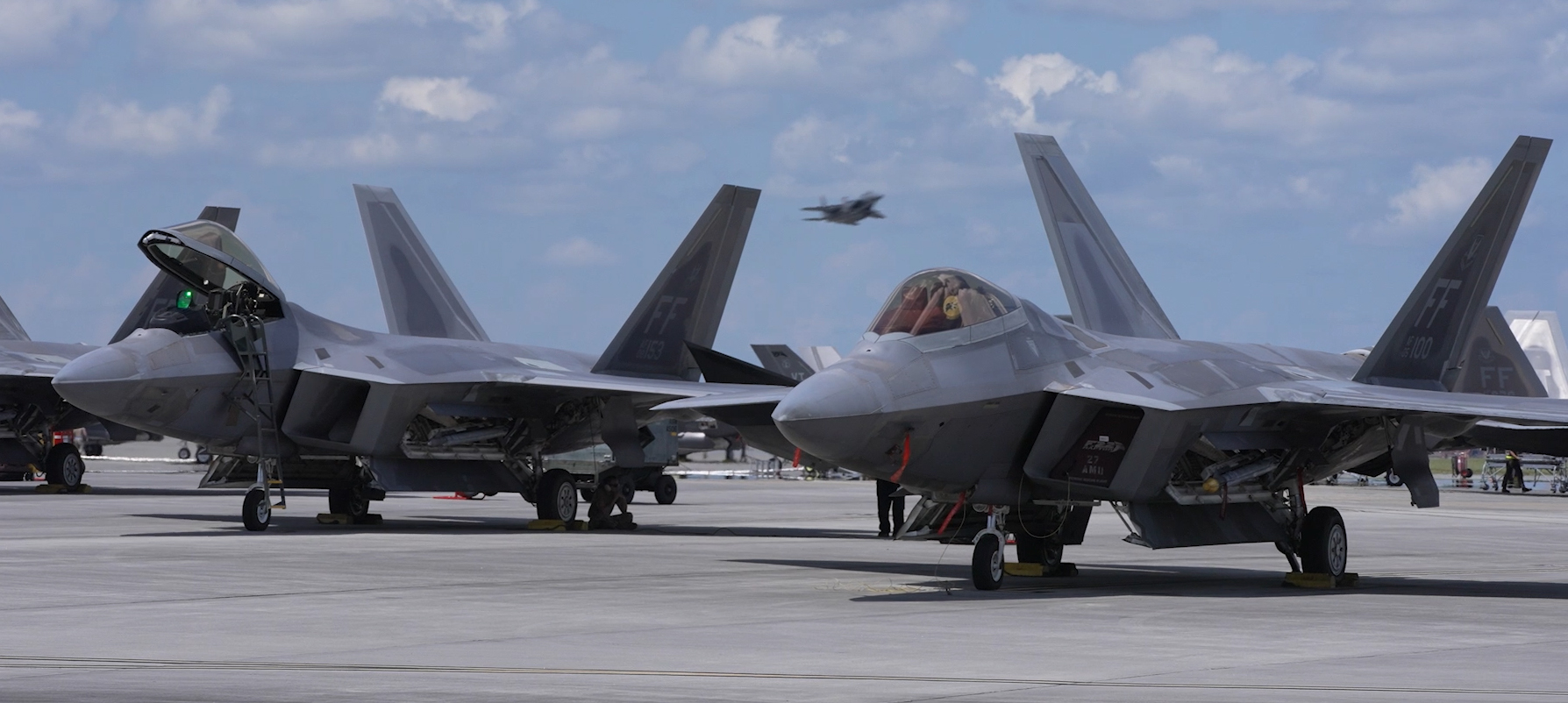
“In the modern era, we fight in an integrated way. We take all the capabilities we have and synchronize them. This shows in William Tell. This morning we had four F-22s, four F-35s, four F-15Es and four F-15Cs fighting in the scenario. They are graded against each other as to how they performed as a team. We look at how the team does as a whole and it comes down to the kill-to-loss ratio, that’s our scoring.”
“We are always training to our most challenging threats, fighting that high-end mission with China as our pacing threat. So, at William Tell, mixing the ‘White Force’ evaluators in, flying F-22s, F-15s, and F-35s as ‘red air’ makes it very challenging for the teams, stealth-v-stealth is a very difficult scenario. But if we can fight and beat ourselves, we should be okay.”
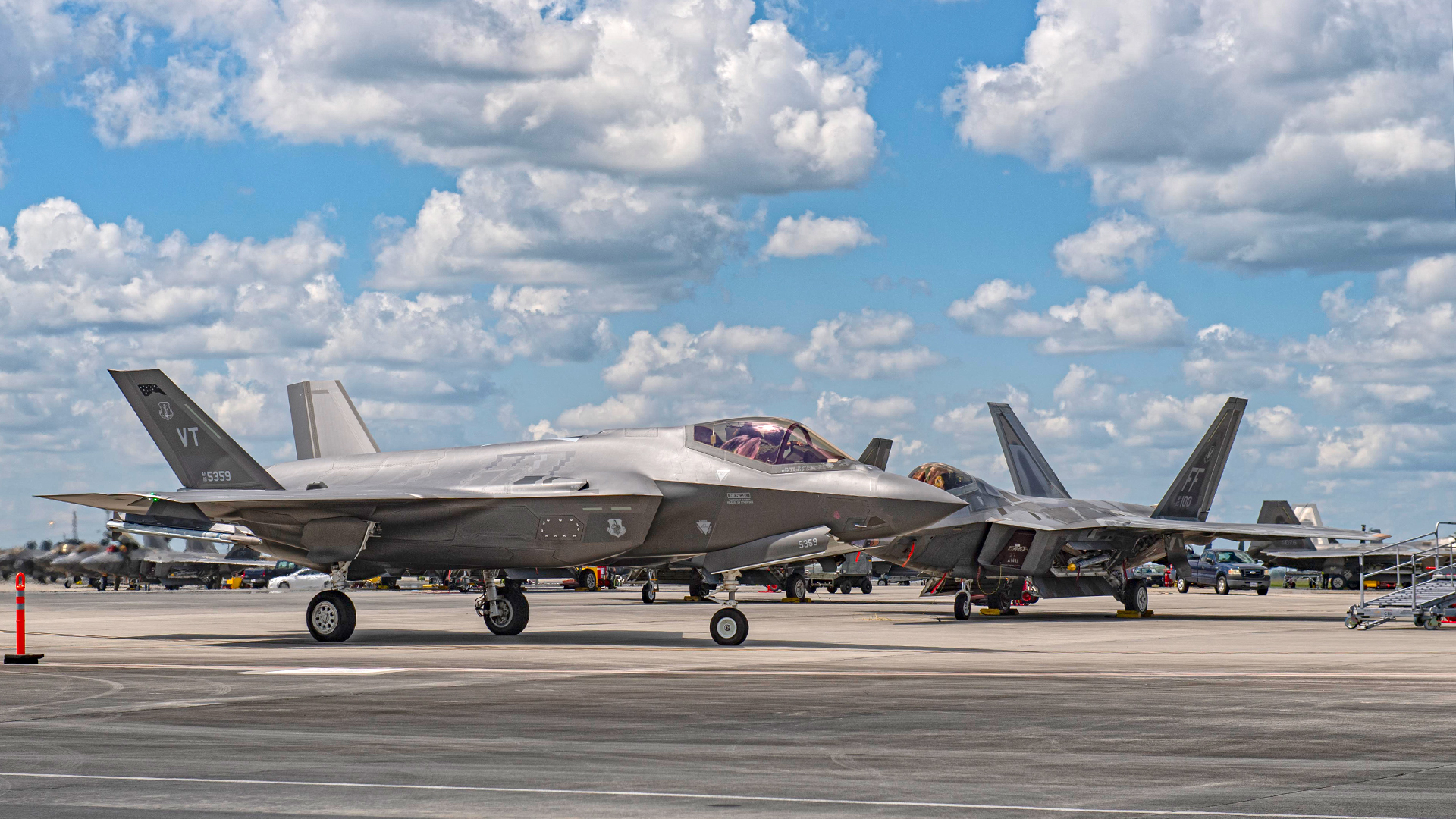
Reflecting on the William Tell missions conducted in the first two days of the exercise, Fesler concludes: “They’re all having a blast here. I think there’s some pressure in the competition, but what I’ve heard from most of the people here at William Tell is that this is the most fun they’ve ever had on a sortie or at an exercise.”
Contact the editor: tyler@thedrive.com
